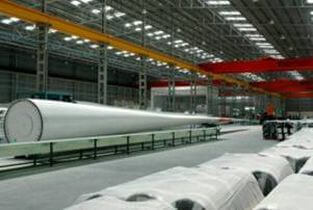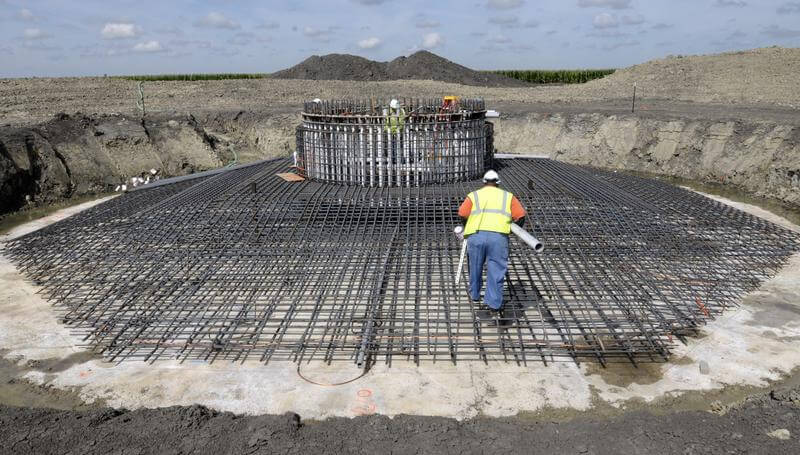
Blog author, Jeremy Tchou
Editor’s note: This is a blog post from AWS Truepower’s (AWST), Jeremy Tchou. He is a Senior Project Manager for Due Diligence Services at AWST, renewable energy consultants. The original blog can be read at AWST website here.
Recently, I have been asked more and more about planning and strategy for Production Tax Credit (PTC) qualification under the 5% spending safe harbor clause. Due to the PTC “sunset” for wind farms over the next few years, it has become increasingly important for developers to qualify for the PTC before the end of 2016.
Although it’s being talked about a lot these days, for anyone who doesn’t know what that is, there are two ways that projects typically qualify for the PTC. First, the 5% safe harbor clause is essentially a clause in the PTC (which was extended in 2015), allowing wind projects to be considered as having begun construction by the end of the year if a minimum of 5% of the project’s total capital cost is incurred before January 1st.
This means that ground doesn’t have to be broken for a project to have “started construction” in the eyes of the IRS. An alternate and second way of satisfying the clause is through the Physical Work Test, which delineates certain construction tasks that are significant enough to contribute towards PTC qualification. Whatever method is used, it doesn’t change the fact that the project has to be in service within four years of the start of construction. No matter how it qualified at the time, the clock starts ticking.
Certainly, the largest expense invested in a wind project is the wind turbines, and so one of the ways to meet the IRS’ 5% requirement is to purchase wind turbines before the end of the calendar year.

Suzlon turbine parts in warehouse storage. The largest expense of a wind project is the turbines. (credit: Suzlon Energy)
There are generally two approaches that can be taken – the developer will either purchase complete turbines, or they might decide instead to purchase individual components (i.e. towers, blades, nacelles, hubs, main transformers, etc.) – to satisfy the safe harbor requirements. What we typically see in terms of the approach to safe harbor varies between developers and their specific situations and needs.
When choosing either approach to the 5% expenditure, there are things to consider that could impact the chosen path, such as the manufacturer’s capacity for production. When considering purchasing components, the availability of a manufacturer’s capacity to produce the parts by a given deadline is important, and they may have more capacity for certain components rather than others. Other things to consider are the storage space necessary to house turbines, or component parts.
Different components can cost more or less depending on their size and the amount of space they need to be stored at a site. In addition, different components have different maintenance requirements. Storage space and maintenance requirements become increasingly important if a purchaser plans to store items for several years. Another consideration when purchasing components is the flexibility of specific components to be used for different turbine configurations. There may be more flexibility in certain components and this is a discussion the purchaser should have with the turbine manufacturer.
Also of note is that just incurring the 5% of project costs doesn’t guarantee that the project will satisfy the spending safe harbor requirement. The IRS will require project developers to maintain records or evidence of their 5% compliance if they want to qualify for the PTC, as will investors and lenders.
What we have been doing for our developer clients, is helping to shape a safe harbor strategy, typically combined with a review of the developer’s proposed project characteristics, turbine technology, or other plans for development.

Foundation construction at E.ON’s Pioneer Trails Wind Farm near Paxton, Illinois.
To perform such a task, the following information is useful so that we can create the best strategy to ensure compliance with the PTC qualification and provide the developer the best change of future success when not all of the projects details are known or finalized.
- Which manufacturers and/or turbine models are you considering? If it is not known, then how many turbine models would you like to consider?
- What regions/areas/specific sites are you considering? Any coastal sites?
- Timing of construction/COD of each facility?
- Amount of safe harbor equipment that is needed? MW? Monetary value?
- Any there any other considerations that might limit location and turbine model selection, such as local noise restraints?
- Are there any plans for “start of construction” qualification for PTC?
In additional to developing and executing a PTC qualification plan, AWST recommends developers take pro-active steps to record and document strategies used to qualify for the PTC. AWST can provide support for safe harbor qualification such as independent visits to factories (or storage facilities) to verify the purchased components have been manufactured and are stored properly.
This is recommended as it provides third-party verification of manufactured components, is valued by investors, and can support a case to the IRS if the project is reviewed. We can also do start of construction site visits if roads, foundations, or other facilities have been installed. The documentation of the status of construction can provide essential evidence of qualification under the PTC requirements. Such visits typically last one day and can be an important piece of information for verification of PTC qualification.
Filed Under: News, Policy, Projects




